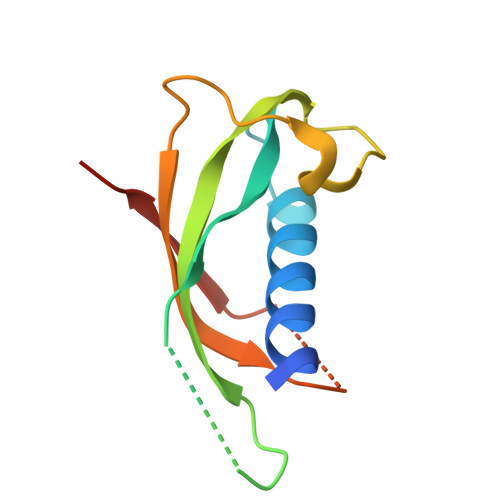Selenomethionine and Selenocysteine Double Labeling Strategy for Crystallographic Phasing
Strub, M.-P., Hoh, F., Sanchez, J.-F., Strub, J.M., Bock, A., Aumelas, A., Dumas, C.(2003) Structure 11: 1359-1367
- PubMed: 14604526
- DOI: https://doi.org/10.1016/j.str.2003.09.014
- Primary Citation of Related Structures:
1PAE, 1PFP - PubMed Abstract:
A protocol for the quantitative incorporation of both selenomethionine and selenocysteine into recombinant proteins overexpressed in Escherichia coli is described. This methodology is based on the use of a suitable cysteine auxotrophic strain and a minimal medium supplemented with selenium-labeled methionine and cysteine. The proteins chosen for these studies are the cathelin-like motif of protegrin-3 and a nucleoside-diphosphate kinase. Analysis of the purified proteins by electrospray mass spectrometry and X-ray crystallography revealed that both cysteine and methionine residues were isomorphously replaced by selenocysteine and selenomethionine. Moreover, selenocysteines allowed the formation of unstrained and stable diselenide bridges in place of the canonical disulfide bonds. In addition, we showed that NDP kinase contains a selenocysteine adduct on Cys122. This novel selenium double-labeling method is proposed as a general approach to increase the efficiency of the MAD technique used for phase determination in protein crystallography.
Organizational Affiliation:
Centre de Biochimie Structurale, UMR CNRS 5048, UMR 554 INSERM, Université Montpellier I, 34090 Cedex, Montpellier, France.



















